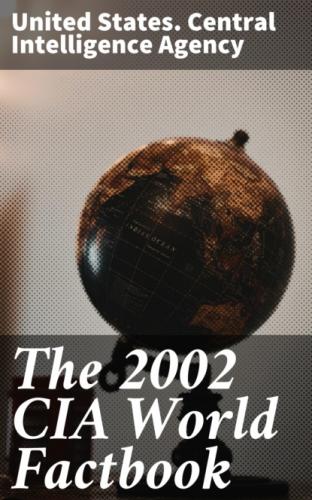Waterways: none
Ports and harbors: none; offshore anchorage only
Military Navassa Island
Military - note: defense is the responsibility of the US
Transnational Issues Navassa Island
Disputes - international: claimed by Haiti
This page was last updated on 1 January 2002
========================================================================
Brazil
Introduction
Brazil
Background: Following three centuries under the rule of Portugal, Brazil became an independent nation in 1822. By far the largest and most populous country in South America, Brazil has overcome more than half a century of military intervention in the governance of the country to pursue industrial and agricultural growth and development of the interior. Exploiting vast natural resources and a large labor pool, Brazil became South America's leading economic power by the 1970s. Highly unequal income distribution remains a pressing problem.
Geography Brazil
Location: Eastern South America, bordering the Atlantic Ocean
Geographic coordinates: 10 00 S, 55 00 W
Map references: South America
Area: total: 8,511,965 sq km land: 8,456,510 sq km note: includes
Arquipelago de Fernando de Noronha, Atol das Rocas, Ilha da Trindade,
Ilhas Martin Vaz, and Penedos de Sao Pedro e Sao Paulo water: 55,455 sq km
Area - comparative: slightly smaller than the US
Land boundaries: total: 14,691 km border countries: Argentina 1,224 km,
Bolivia 3,400 km, Colombia 1,643 km, French Guiana 673 km, Guyana 1,119
km, Paraguay 1,290 km, Peru 1,560 km, Suriname 597 km, Uruguay 985 km,
Venezuela 2,200 km
Coastline: 7,491 km
Maritime claims: contiguous zone: 24 NM territorial sea: 12 NM continental shelf: 200 NM or to edge of the continental margin exclusive economic zone: 200 NM
Climate: mostly tropical, but temperate in south
Terrain: mostly flat to rolling lowlands in north; some plains, hills, mountains, and narrow coastal belt
Elevation extremes: lowest point: Atlantic Ocean 0 m highest point:
Pico da Neblina 3,014 m
Natural resources: bauxite, gold, iron ore, manganese, nickel, phosphates, platinum, tin, uranium, petroleum, hydropower, timber
Land use: arable land: 6% permanent crops: 2% other: 92% (1998 est.)
Irrigated land: 26,560 sq km (1998 est.)
Natural hazards: recurring droughts in northeast; floods and occasional frost in south
Environment - current issues: deforestation in Amazon Basin destroys the habitat and endangers a multitude of plant and animal species indigenous to the area; there is a lucrative illegal wildlife trade; air and water pollution in Rio de Janeiro, Sao Paulo, and several other large cities; land degradation and water pollution caused by improper mining activities; wetland degradation; severe oil spills
Environment - international agreements: party to: Antarctic-Environmental
Protocol, Antarctic-Marine Living Resources, Antarctic Seals, Antarctic
Treaty, Biodiversity, Climate Change, Desertification, Endangered
Species, Environmental Modification, Hazardous Wastes, Law of the Sea,
Marine Dumping, Nuclear Test Ban, Ozone Layer Protection, Ship Pollution,
Tropical Timber 83, Tropical Timber 94, Wetlands, Whaling signed, but
not ratified: Climate Change-Kyoto Protocol
Geography - note: largest country in South America; shares common boundaries with every South American country except Chile and Ecuador
People Brazil
Population: 176,029,560 note: Brazil took an intercensal count in August 1996 which reported a population of 157,079,573; that figure was about 5% lower than projections by the US Census Bureau, which is close to the implied underenumeration of 4.6% for the 1991 census; estimates for this country explicitly take into account the effects of excess mortality due to AIDS; this can result in lower life expectancy, higher infant mortality and death rates, lower population and growth rates, and changes in the distribution of population by age and sex than would otherwise be expected (July 2002 est.)
Age structure: 28% (male 25,140,954; female 24,199,276) 15-64 years: (male 3,992,017; female 5,863,234) (2002 est.)
Population growth rate: 0.87% (2002 est.)
Birth rate: 18.08 births/1,000 population (2002 est.)
Death rate: 9.32 deaths/1,000 population (2002 est.)
Net migration rate: -0.03 migrant(s)/1,000 population (2002 est.)
Sex ratio: at birth: 1.05 male(s)/female under 15 years: 1.04 male(s)/female 15-64 years: 0.97 male(s)/female 65 years and over: 0.68 male(s)/female total population: 0.97 male(s)/female (2002 est.)
Infant mortality rate: 35.87 deaths/1,000 live births (2002 est.)
Life expectancy at birth: 67.91 years (2002 est.) male: Total fertility rate: 2.05 children born/woman (2002 est.)
HIV/AIDS - adult prevalence rate: 0.57% (1999 est.)
HIV/AIDS - people living with HIV/AIDS: 540,000 (1999 est.)
HIV/AIDS - deaths: 18,000 (1999 est.)
Nationality: noun: Brazilian(s) adjective: Brazilian
Ethnic groups: white (includes Portuguese, German, Italian, Spanish,
Polish) 55%, mixed white and black 38%, black 6%, other (includes
Japanese, Arab, Amerindian) 1%
Religions: Roman Catholic (nominal) 80%
Languages: Portuguese (official), Spanish, English, French
Literacy: definition: age 15 and over can read and write total population: 83.3% male: 83.3% female: 83.2% (1995 est.)
Government Brazil
Country name: conventional long form: Federative Republic of Brazil conventional short form: Brazil local short form: Brasil local long form: Republica Federativa do Brasil
Government type: federative republic
Capital: Brasilia
Administrative divisions: 26 states (estados, singular - estado) and 1
federal district* (distrito federal); Acre, Alagoas, Amapa, Amazonas,
Bahia, Ceara, Distrito Federal*, Espirito Santo, Goias, Maranhao,
Mato Grosso, Mato Grosso do Sul, Minas Gerais, Para, Paraiba, Parana,
Pernambuco, Piaui, Rio de Janeiro, Rio Grande do Norte, Rio Grande do Sul,
Rondonia, Roraima, Santa Catarina, Sao Paulo, Sergipe, Tocantins
Independence: 7 September 1822 (from Portugal)
National holiday: Independence Day, 7 September (1822)
Constitution: 5 October 1988
Legal system: based on Roman codes; has not accepted compulsory ICJ jurisdiction
Suffrage: voluntary between 16 and 18 years of age and over 70; compulsory over 18 and under 70 years of age
Executive branch: chief of state: President Fernando Henrique CARDOSO (since 1 January 1995); Vice President Marco MACIEL (since
